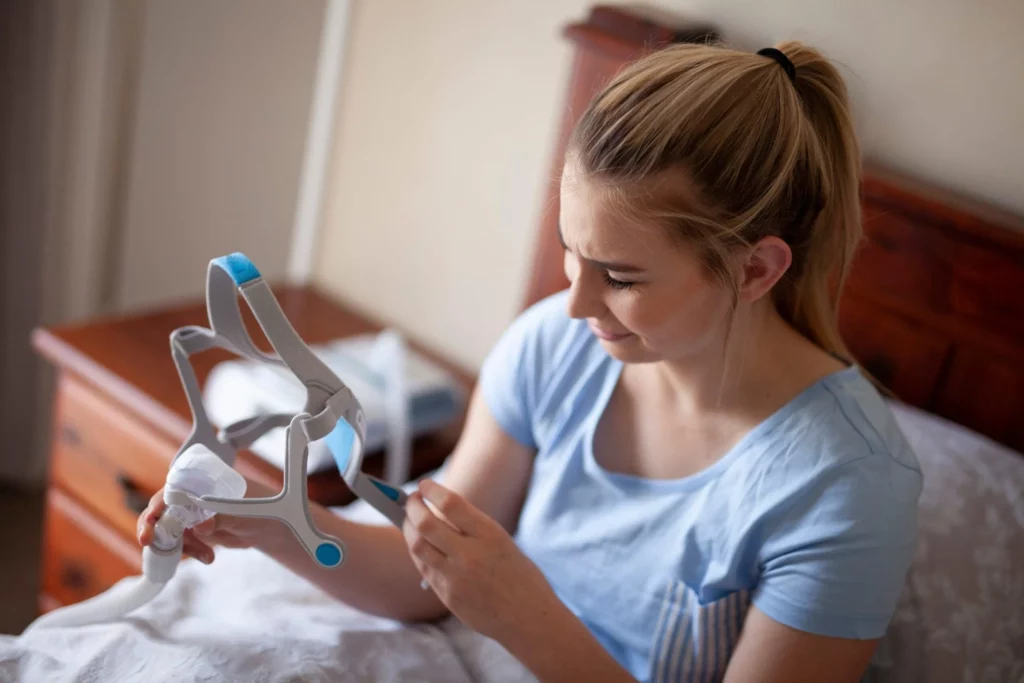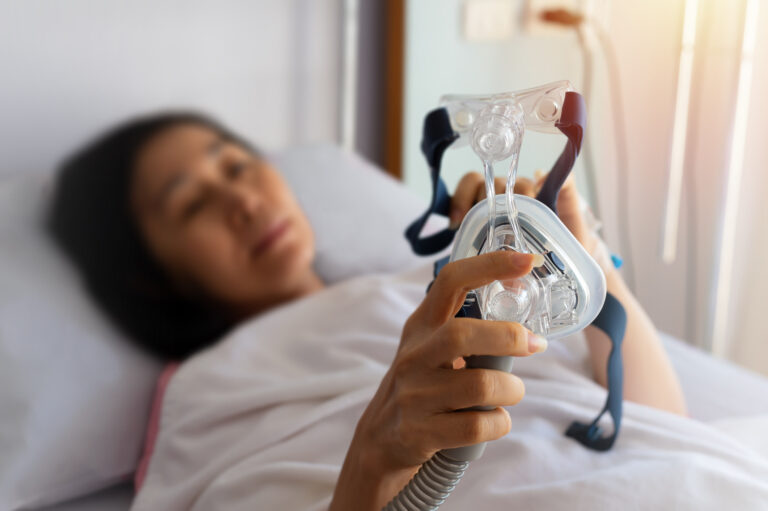How Often Should You Replace Your CPAP Mask and Accessories?
Continuous Positive Airway Pressure (CPAP) therapy is a common treatment for obstructive sleep apnoea, helping countless individuals achieve better sleep and improved health. However, the effectiveness of this therapy largely depends on the condition of the CPAP equipment, particularly the mask and its accessories. Understanding when to replace these components is crucial for maintaining optimal performance and hygiene.
The Importance of Regular Replacement
CPAP masks and accessories undergo wear and tear over time, which can affect their functionality and comfort. Regular replacement not only ensures a better fit but also prevents potential health risks associated with dirty or damaged equipment.
Generally, it is advisable to replace CPAP masks every 6 to 12 months. Factors such as usage frequency, cleaning habits, and the type of mask can influence this timeline. For instance, full-face masks may need to be replaced more frequently than nasal masks due to their larger surface area and increased wear.

Health Risks of Old Equipment
Using an old or worn-out CPAP mask can lead to a variety of health issues. Bacteria and mould can accumulate on the mask and tubing, increasing the risk of respiratory infections. Additionally, a poorly fitting mask may cause skin irritation or pressure sores, leading to discomfort during use.
Moreover, if the mask does not create a proper seal due to wear, it can result in air leaks. This not only diminishes the effectiveness of the therapy but can also lead to disrupted sleep patterns, negating the benefits of CPAP treatment.
Furthermore, the accumulation of dust and allergens on older equipment can exacerbate existing respiratory conditions, such as asthma or chronic obstructive pulmonary disease (COPD). Regular cleaning is essential, but it is equally important to replace worn components to ensure that the equipment does not become a source of irritation or illness. Patients often underestimate the impact of a clean, well-maintained CPAP system on their overall health, but the difference can be quite significant.
Read about cpap machine buying at: Can You Buy CPAP Machines Without a Sleep Study? What You Need to Know
Impact on Therapy Effectiveness
The primary goal of CPAP therapy is to keep the airways open during sleep. A mask that is not functioning properly can hinder this process. Regularly replacing the mask and its components ensures that the therapy remains effective, allowing for uninterrupted sleep and better overall health.
In addition to ensuring a proper fit, the materials used in CPAP masks have evolved significantly over the years. Newer models often incorporate advanced technologies and hypoallergenic materials that enhance comfort and reduce the risk of skin irritation. This means that not only do patients benefit from improved functionality, but they also enjoy a more pleasant experience while undergoing treatment. Staying updated with the latest advancements in CPAP technology can make a notable difference in the quality of sleep and overall well-being for those relying on this essential therapy.
Recommended Replacement Schedule
While individual needs may vary, there are general guidelines for how often CPAP masks and accessories should be replaced. Following these recommendations can help users maintain their equipment in optimal condition.

CPAP Masks
Signs that a mask needs replacing include visible wear, such as cracks or tears, a loss of elasticity in the straps, or a persistent odour that cannot be eliminated through cleaning. If any of these issues arise, it is time to consider a replacement. Read more about elasticity on https://pubmed.ncbi.nlm.nih.gov/34978291/
Headgear and Straps
The headgear and straps that hold the CPAP mask in place also require regular attention. These components should be replaced approximately every 6 to 12 months, depending on their condition. Over time, the fabric can become stretched or worn, leading to a poor fit and increased risk of air leaks.
Users should inspect their headgear regularly for signs of wear, such as fraying or loss of elasticity. If the straps do not hold the mask securely in place, it is essential to replace them to ensure effective therapy.
Filters and Tubing
Filters and tubing are critical components of the CPAP system that also require regular replacement. Disposable filters should be replaced every month, while reusable filters can typically last up to six months, depending on usage and cleaning practices.
CPAP tubing should be replaced every 6 to 12 months as well. Over time, tubing can develop cracks or become discoloured, which can affect airflow and hygiene. Regularly inspecting and replacing these components is vital for maintaining a clean and effective CPAP system.
Signs That It’s Time for a Replacement
Recognising the signs that CPAP equipment needs replacing can help users avoid potential issues. Being proactive about replacements can lead to a more comfortable and effective therapy experience.
Visible Wear and Tear
One of the most obvious indicators that a CPAP mask or accessory needs replacing is visible wear and tear. Cracks, tears, or discolouration can all signify that the equipment is no longer functioning optimally. Regularly inspecting the mask and accessories can help users identify these issues early. Click here to find more about discolouration.
Additionally, if the mask feels less comfortable or does not fit as snugly as it once did, it may be time to consider a replacement. A proper fit is essential for effective therapy and comfort during sleep.
Persistent Odours
Even with regular cleaning, CPAP equipment can develop unpleasant odours over time. If a mask or accessory has a persistent smell that cannot be eliminated through washing, it may be time to replace it. Lingering odours can indicate the presence of bacteria or mould, which can pose health risks.
Changes in Therapy Comfort
Users may notice changes in their comfort level while using CPAP therapy. If the mask begins to feel uncomfortable or causes irritation, it could be a sign that it needs replacing. A well-fitting, comfortable mask is crucial for adherence to therapy and overall effectiveness.
Maintenance Tips for Longevity
While regular replacement is essential, proper maintenance can also prolong the life of CPAP masks and accessories. Implementing good cleaning habits and storage practices can help users get the most out of their equipment.
Regular Cleaning
Cleaning CPAP equipment regularly is vital for maintaining hygiene and functionality. Masks should be washed daily with mild soap and warm water, while tubing can be cleaned weekly. Ensuring that all components are thoroughly dried before reassembly can help prevent mould and bacteria growth.
It is also advisable to follow the manufacturer’s cleaning instructions, as different materials may require specific care. Regular cleaning not only helps maintain hygiene but can also extend the lifespan of the equipment.
Proper Storage
When not in use, CPAP equipment should be stored in a clean, dry place. Avoid exposing the equipment to extreme temperatures or direct sunlight, as this can cause damage. Keeping the equipment in a protective case can also help prevent dust accumulation and physical damage.
Consulting with Healthcare Professionals
For those using CPAP therapy, regular consultations with healthcare professionals are essential. They can provide guidance on when to replace equipment and offer recommendations tailored to individual needs.
Regular Follow-ups
Scheduling regular follow-up appointments allows healthcare providers to monitor the effectiveness of CPAP therapy and make necessary adjustments. During these visits, users can discuss any concerns regarding their equipment and receive advice on maintenance and replacement schedules.
Personalised Recommendations
Every individual’s experience with CPAP therapy is unique. Healthcare professionals can offer personalised recommendations based on factors such as usage patterns, comfort levels, and specific health conditions. This tailored approach can enhance the overall effectiveness of the therapy.
Conclusion
Replacing CPAP masks and accessories regularly is crucial for maintaining effective therapy and ensuring user comfort. By adhering to recommended replacement schedules, recognising signs of wear, and implementing proper maintenance practices, users can optimise their CPAP experience. Regular consultations with healthcare professionals further enhance the effectiveness of treatment, ensuring that individuals can enjoy the benefits of restful sleep and improved health.


